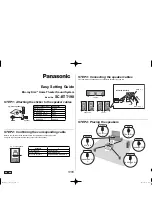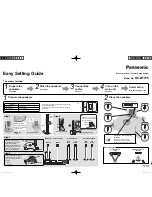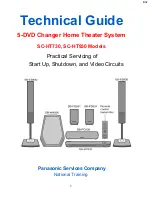
Design Guide for Hazloc / Industrial
Self regulating trace heating systems
01-5800-7N0012/-
05/2019-EHT-432712
Notice
Technical data subject to change without notice.
No claims for damage arising from alternations, errors or misprints shall be allowed.
Page 36 / 46
Tests and commissioning
Measurement of the insulation resistance
The measurement of the insulation resistance is used to determine damage to the trace heater and possible installation faults. It must be carried
out at the following times:
▪
Preliminary test (on the reel, before installation of the trace heater on the construction site; refer to section
Acceptance Report
on page 40)
▪
Acceptance test (after installation of the heating circuit and before installation of the thermal insulation; refer to section
Acceptance Report
on
page 40)
▪
Final inspection (immediately after completion of work on the thermal insulation)
▪
Upon commissioning
▪
Before switching on the installation
Preparation of the measurement:
▪
De-energize the heating circuit.
▪
Disconnect the thermostat or controller, if installed.
▪
Disconnect the bus wires and PE wires from the terminal block, if installed.
▪
For the measurement you will need a megohmmeter with, at least, a minimum testing voltage of 500 Vdc and a maximum testing voltage of 2500 Vdc.
Test 1 - Conducting the measurement between the bus wires and the grounding braid:
▪
Set the test voltage to 0 Vdc.
▪
Connect the negative (-) lead to the grounding braid of the trace heater.
▪
Connect the positive (+) lead to both trace heater bus wires simultaneously.
▪
Turn on the megohmmeter and set the voltage to 500 Vdc.
▪
Apply the voltage for 1 minute. The meter reading should stabilize. Rapid changes in the reading indicate a breakdown of the insulation.
▪
Record the insulation resistance value in the Inspection Record.
▪
Repeat the measurement at 1000 and 2500 Vdc.
Test 2 - Conducting the measurement between the grounding braid and PE:
▪
Repeat the measurement between the grounding braid and PE (again, at 500, 1000 and 2500 Vdc).
Results:
▪
Properly installed dry and clean trace heater sets should measure thousands of megohms, regardless of the trace heater length or measuring
voltage (0-2500 Vdc). Even if optimum conditions may not apply, all insulation resistance values should be greater than the IEC 60079-30.1:2015
minimum recommendation of 20 megohms. However, BARTEC strongly recommends a minimum reading of 1000 megohms. If the reading is
lower or fluctuating, refer to section
Troubleshooting
on page 39.
▪
Insulation resistance values for Test 1 and 2; for any particular circuit, should not vary more than 25 percent as a function of measuring volt-
age. Greater variances may indicate a problem with your trace heating system; confirm proper installation and/or contact your local BARTEC
representative for assistance.
WARNING
Risk of fire or electrical shock. If the insulation resistance is insufficient you must fix the heating circuit before putting it into operation.
After the measurement:
If trace heater meets all resistance criteria:
▪
Reconnect the bus wires.
▪
Reconnect any thermostat or controller.
▪
Reenergize the circuit.













































